You probably already know about the classic cat breeds, that is, Tuxedos, tabbies, and calicos. These aren’t really different breeds at all, just different color variations of domesticated cats. If you take your feline friend to the vet, you may see their breed listed as DSH or DLH, which is “Domestic Short Hair” and “Domestic Long Hair”. The typical cat is generally made up of a long line of “mutts”, which is just fine. The genetic diversity this provides to most cats is good for their population.
There are a number of actual breeds of cats and we are going to discuss some of the rarest cat breeds that you may not have heard of. For example, the Kurilian Bobtail, which has a super-short tail (like a wild lynx). The Devon Rex, on the other hand, has curly fur. Or, there’s the Minikin, with its short, corgi-like legs.
Learn more about 16 of the rarest cats, below!
1. The American Bobtail Cat

American
Bobtail cats
can have a variety of coat colors, lengths, and patterns.
©iStock.com/Jane-Khomi
The American Bobtail is so-named for its adorable, stubby, 1-3 inch tail (compared to most cats, who have 9-12-inch tails). They are generally quite calm and friendly and tend to enjoy a good snuggle (a quintessential lap cat).
The American Bobtail first came to be in the 1960s, when a Siamese cat was crossed with a male tabby with a bobtail. This gave them deeply-set, almond-shaped eyes, and of course, a bobtail! American Bobtails are known for their gorgeously striped or spotted coats, which can be both long-hair or short-hair. Their rear legs are rather long compared to their front legs for a cat, similar to a bear!
2. The Kurilian Bobtail Cat

Kurilian Bobtail cats greatly enjoy the outdoors and are highly athletic.
©iStock.com/Oksana Lyskova
The Kurilian Bobtail gets its name from its home origin, the Russian Kuril Islands. It’s believed that this beautiful, short-tailed cat developed from a genetic mutation that then became common, resulting in an unusually short tail. Kurilian Bobtails are rather stocky, similar to bobcats, with striped or spotted long or short fur. They are quite gentle and easy-going, making them ideal for households with children or cat-friendly pets (including dogs). Kurilian Bobtails are also quite loving and playful!
3. The Sokoke Cat
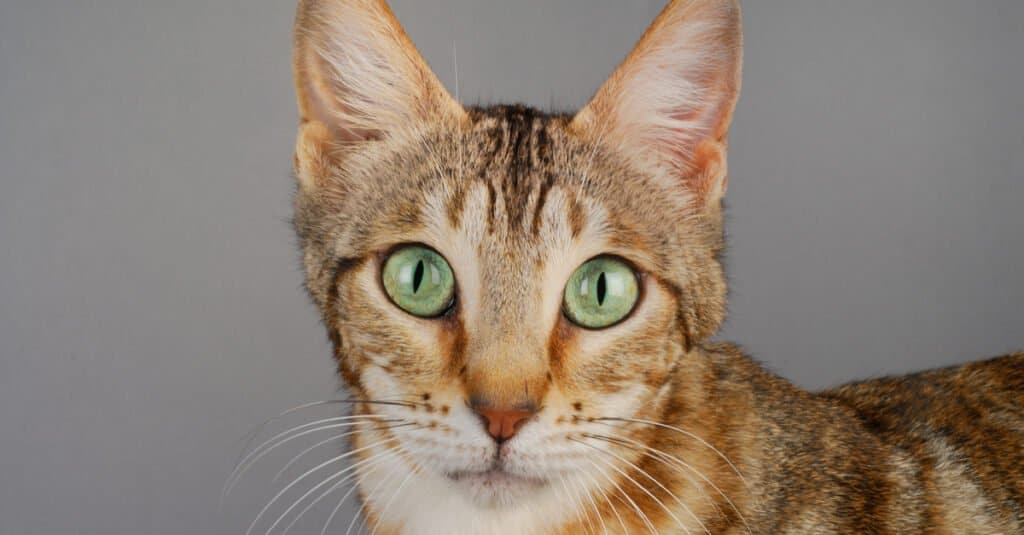
The Sokoke cat is extremely rare!
©COULANGES/Shutterstock.com
The Sokoke cat is said to be the rarest cat in the world. Rather than being a man-created breed, the Sosoke is a naturally occurring, tiny wildcat that can be found only in the Arabuko-Sokoke Forest Preserve in Kenya (Africa). These long-limbed, striped cats have unique, thickly-banded stripes as if drawn on with charcoal. Despite their wild origins, Sosoke Cats are happy to follow their people around, whether you’re cleaning or watching TV!
4. The Devon Rex Cat

The Devon Rex weighs around six to nine pounds.
©iStock.com/insonnia
The Devon Rex is a rare, unique-looking cat that originated in England in the 1950s. These lovely cats have unusually short snouts, high cheekbones, exceptionally large, bat-like ears, and distinctive, wavy fur. They are energetic little felines, and quite charming, mischievous, and playful!
5. The Turkish Angora Cat

Turkish white angora cat in the living room lying on the couch, brown background
©TheCats/Shutterstock.com
Turkish Angoras are super-sweet, sensitive cats (in fact, they are known to have some trouble with change, but are otherwise calm by nature). Appearing around the 1700s in Central Anatolia (ancient Turkey) they swiftly gained popularity not just for their exceptional grace but for their extraordinary, silky coat. This comes in black, blue, red, tortoiseshell, brown, cream, classic, and mackerel, and is said to positively shimmer!
6. The Havana Brown Cat
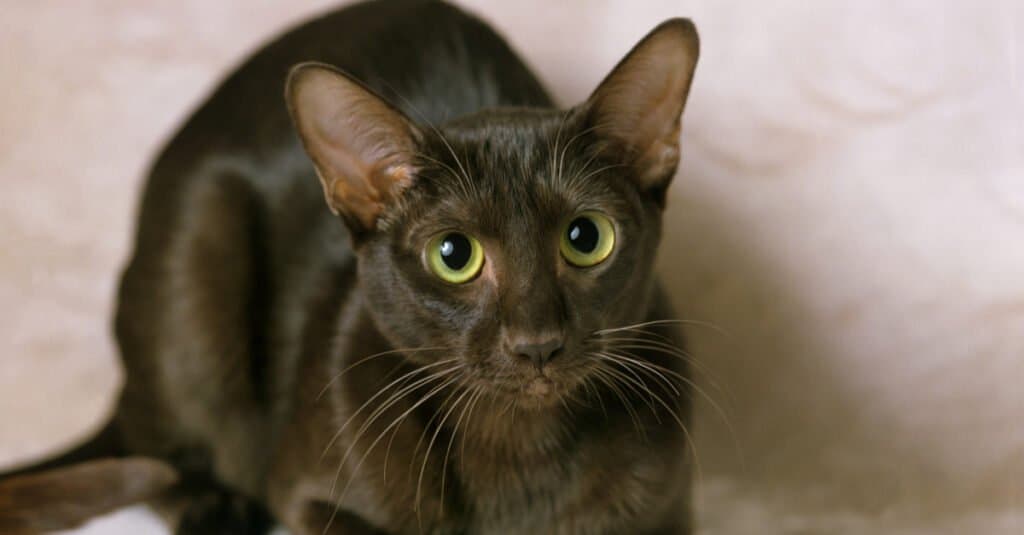
Havana
brown cats
are very muscular
©slowmotiongli/Shutterstock.com
The Havana Brown came to be in the 1950s when a group of cat-enthusiasts bred black domesticated cats with Siamese cats. The result is a cat that is slim and long-limbed, yet very muscular. The Havana brown also shares the long face and charming almond-shaped eyes of their Siamese ancestor. If you are able to gain the friendship of a Havana Brown cat, you have a friend for life, but they may still – at times – be a bit of a loner!
7. The Burmilla Cat
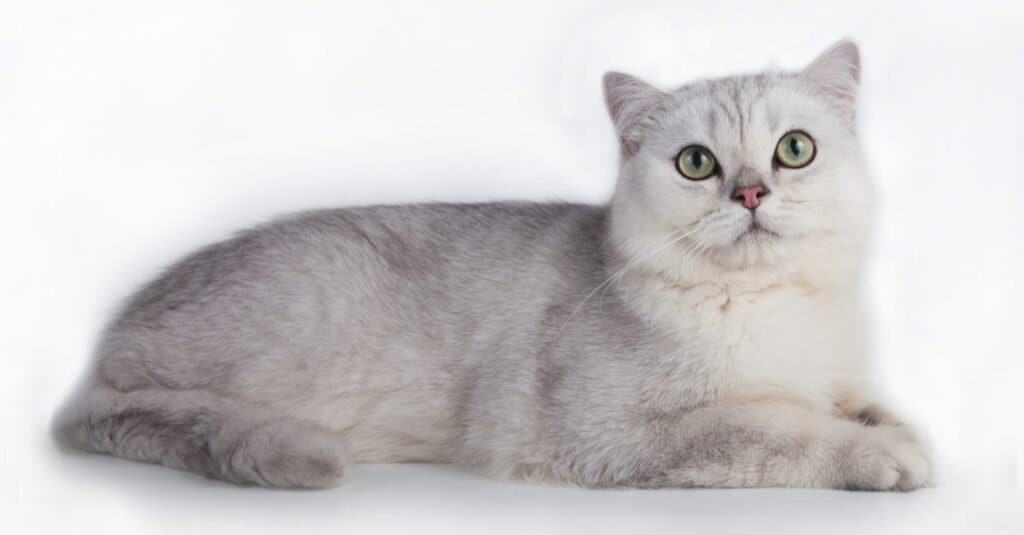
Burmilla cats are expensive and rare
©OrangeGroup/Shutterstock.com
The Burmilla cat is the result of the 4-generation breeding of the Burmese cat and the Chincilla Persian. Because of the time-consuming breeding process, the Burmilla is definitely one of the rarest cats out there (selling at around $800-$1200). Burmilla cats have adorable, forever-baby faces, as well as matching, kitten-like behavior. They have distinctive black rimming around their eyes and noses and very soft fur. The Burmilla makes a lovely companion animal, as they tend to bond closely with their owners, are not needy, and are immensely loyal!
8. The LaPerm Cat
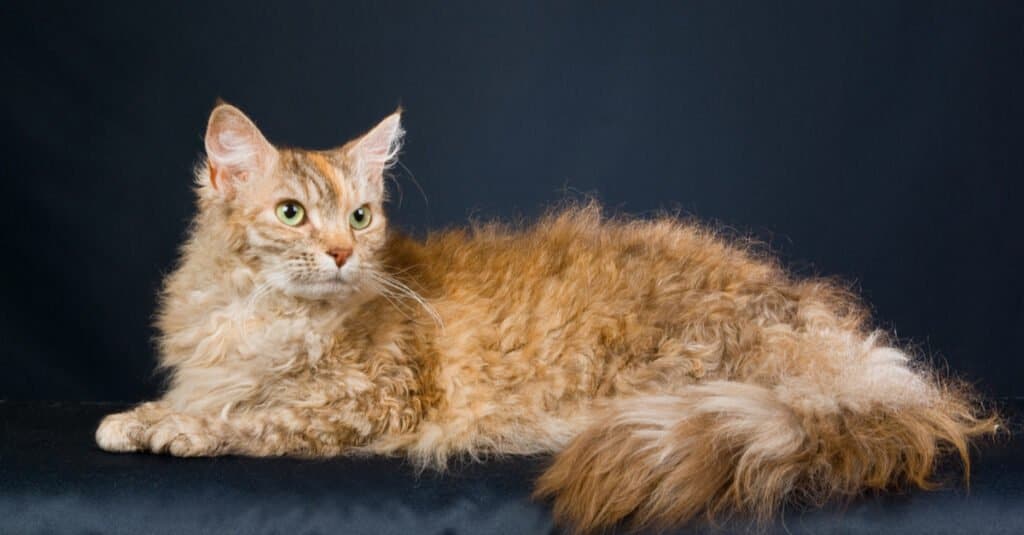
LaPerm cats have a unique coat!
©Linn Currie/Shutterstock.com
The LaPerm Cat has highly unique, naturally curly fur! Appearing relatively recently, in the 1980s, the LaPerm is the result of a spontaneous genetic mutation that caused their fur to curl (much like a lamb’s). This is the most distinctive trait of the rare LaPerm Cats, along with their friendly, lap-cat tendencies. Their coats are also nicely low-maintenance, as they tend to shed less than cats with straight fur!
9. The Egyptian Mau Cat

The
Egyptian Mau’s
spotted coat is all natural!
©ARTSILENSE/Shutterstock.com
While many cats are striped, few are spotted like the Egyptian Mau. This gives it a very unique and rare look! As their name implies, Egyptian Mau cats originated in ancient Egypt. Personality-wise, the Egyptian Mau tends to be playful and loyal. This is a medium to a small spotted cat that’s capable of super speed. The fastest domesticated cat, the Egyptian Mau has been known to run as much as 30 MPH!
10. The Korat Cat

Korat cats originally hail from Thailand
©Nynke van Holten/Shutterstock.com
The Korat is a seldom heard-of but worth hearing-of cat that originally hails from Thailand. Korats are best known for their breathtaking, silvery-blue coats. They have wide, almond-shaped, often green eyes, and they are affectionate, lively, and small (with females weighing in at a mere 6-8 pounds). They are beloved both for their personalities and their coat’s rich color!
11. The Minskin Cat
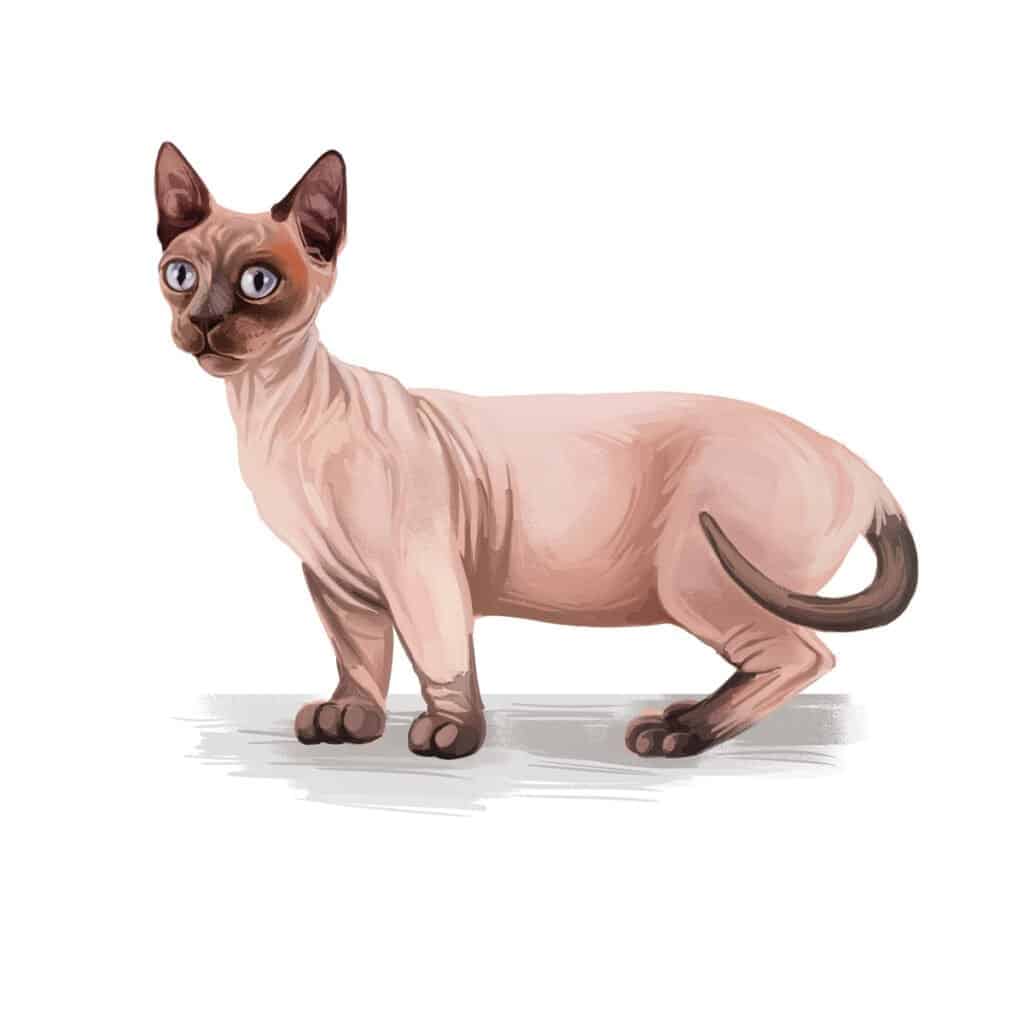
The minskin cat has a distinctive appearance!
©Dneprstock/Shutterstock.com
The Minskin is an ultra-rare combination of the Munchkin (with their super-short short legs), Burmese, the Devon Rex (with their wavy fur), and the Sphynx. The result is a cute, short-legged, stocky cat (it’s basically the cat equivalent of a wiener dog or corgi). Minskin cats are very snuggly (having been compared to hot water bottles) and have warm skin and super-short, velvety fur!
12. The Peterbald Cat
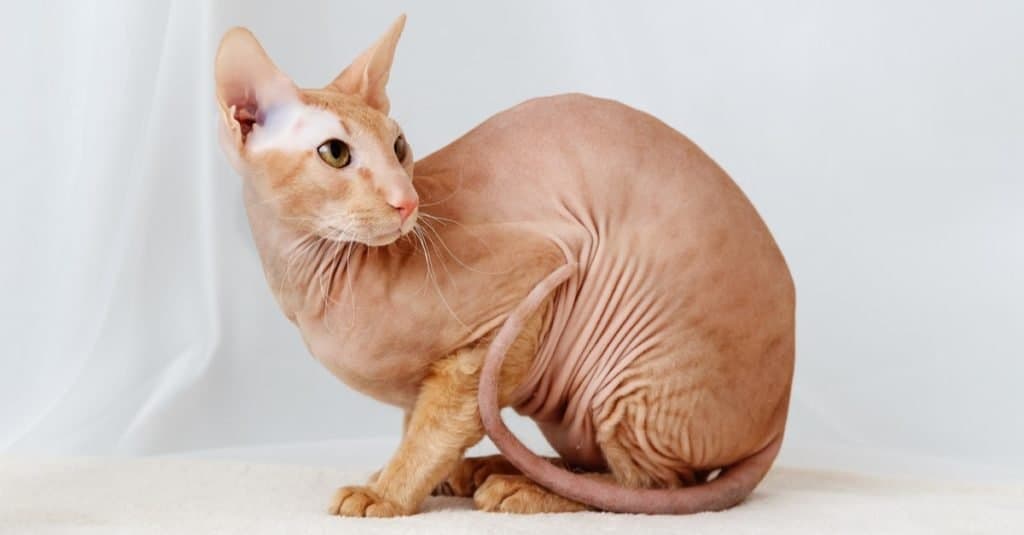
The Peterbald cat is sensitive to extreme temperatures and should rather be an indoor cat. It’s a rare cat breed thanks to its hairless appearance
©Ires003/Shutterstock.com
The Peterbald is essentially a hairless Oriental Shorthair. They were created fairly recently, in 1994, by breeding an Oriental Shorthair with a Sphynx! Peterbald cats have long snouts, high cheekbones, and chiseled features (thanks to both sides of their ancestry) that give them an impressively regal look. Personality-wise, the Peterbald cat is said to get along famously with most folks (and pets). They are exceptionally affectionate and playful!
13. The Chartreux Cat

The
Chartreux
is the national cat of France.
©iStock.com/Marc Andreu
The Chartreux is a renowned hunter and world-famous mouser! This rare cat breed has been coveted not only for this but also for its thick, plush, water-repellent coat. Chartreux cats have big, round eyes, and they are distinguished by truly lovely blue-gray fur (varying from ashy to dark gray). The Chartreux cat loves to chirp and (politely) talk. This is a sweet-natured cat that will likely pick a favorite person to bond with and follow!
14. The Sphynx Cat
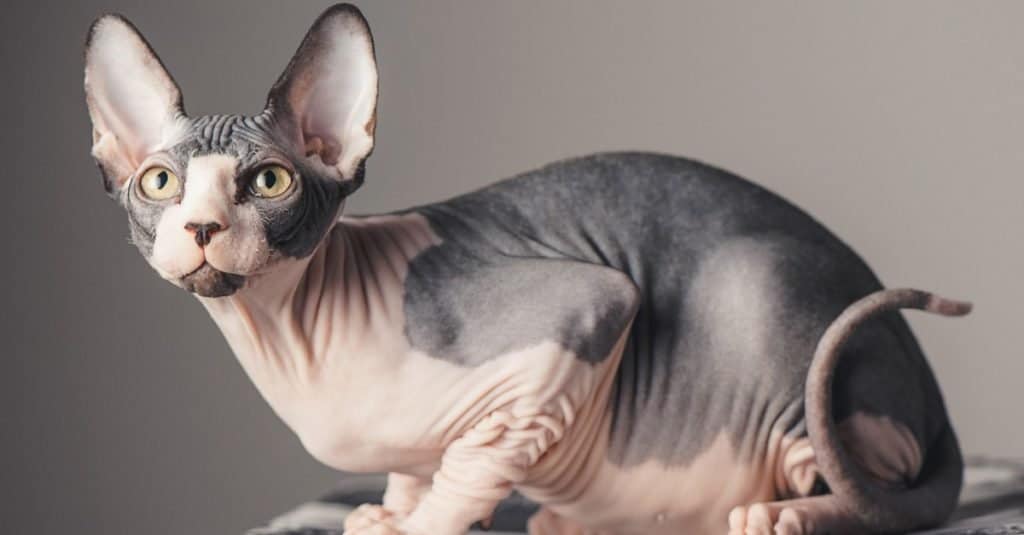
The Sphynx cat is known for being clingy. And they are happiest when they are in the presence of their owners. They love to cuddle and are often reported as being equally sensitive and sweet
©Yuryi Oleinikov/Shutterstock.com
You’ve probably seen a Sphynx cat before, if not in person then online. These hairless cats have a truly unique look that folks seem to love or hate. They came to be in 1996 when a male cat happened to be born without fur. This guy was then bred to create more cats with the same hairless look – the Sphynx!
Sphynx cats have beautifully sculpted features, including large, almond-shaped eyes and high cheekbones that look positively regal. Sphynx cats live up to their kingly and queenly appearance, with gregarious, benevolent natures that have made them highly sought-after!
15. The Tonkinese Cat
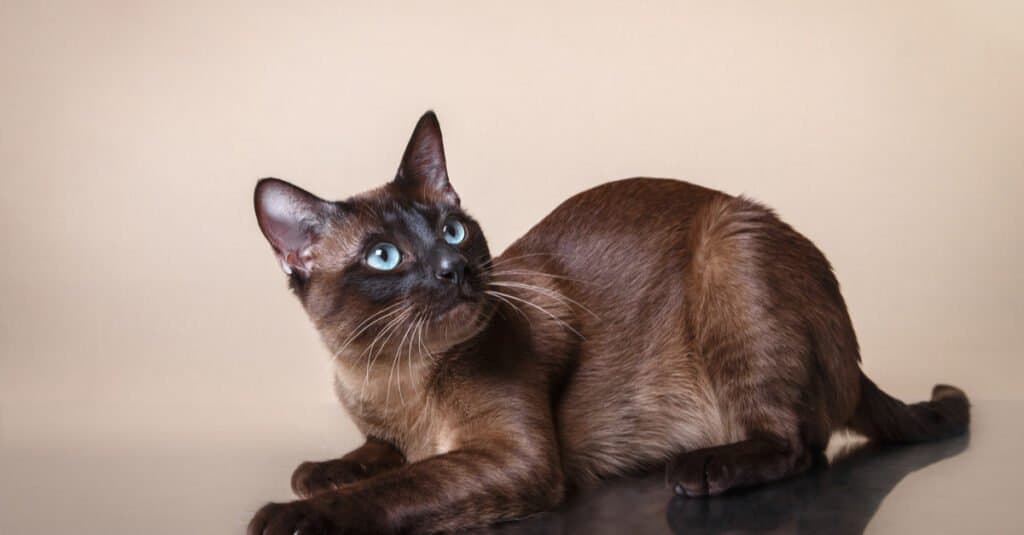
Tokinese are a beautiful cat, but are also a rare cat breed!
©dezy/Shutterstock.com
The Tonkinese is a unique, rather rare combination of Siamese and Burmese cats. These cats are remarkably intelligent, as well as fairly active and vocal. They have the long-limbed build of a Siamese cat, combined with the plush fur and round face of a Burmese cat. The result is a truly adorable, soft, bright-eyed critter!
16. The Norwegian Forest Cat
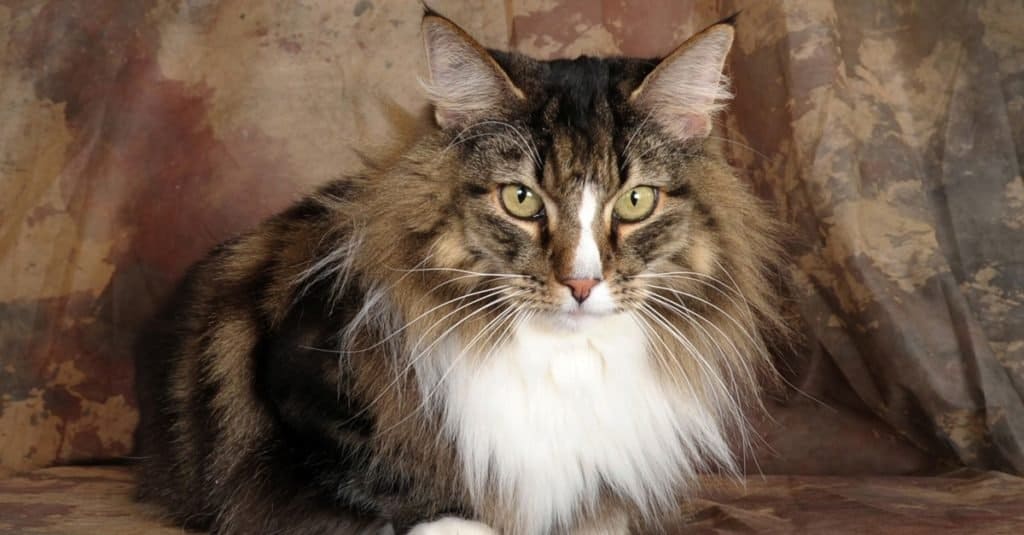
Pretty long-haired
Norwegian forest
cat lying on brown speckled cloth.
©GracefulFoto/Shutterstock.com
The Norwegian Forest cat is, in a word, kingly. This is an enormous cat breed that roams wild in Norway, and they think that Vikings may have first brought them over. These cats are fairly large, and look even bigger thanks to their ultra-thick, fluffy coats (made to withstand fierce Northern Norway weather). These are some of the fluffiest cats you’ll find, and they’ve got big, hearty personalities to match – perfect for any cat lover!
Summary Of The 16 Rarest Cats In The World
| Breed | |
|---|---|
| 1 | American Bobtail Cat |
| 2 | Kurilian Bobtail Cat |
| 3 | Sokoke Cat |
| 4 | Devon Rex |
| 5 | Turkish Angora |
| 6 | Havana Brown Cat |
| 7 | Burmilla Cat |
| 8 | LaPerm Cat |
| 9 | Egyptian Mau Cat |
| 10 | Korat Cat |
| 11 | Minskin Cat |
| 12 | Peterbald Cat |
| 13 | Chartreux Cat |
| 14 | Sphinx Cat |
| 15 | Tonkinese Cat |
| 16 | Norwegian Forest Cat |
Honorable Mentions: A Few More Rare Cat Breeds
While we covered quite a large amount of rare cat breeds the world over, there are others that are equally rare in their own right. Below is a list of three notable cat breeds that also qualify as the rarest in the world.
Caracal

Humans have made many attempts in the course of history to domesticate caracals, but these cats are innately wild.
Caracals are native to the wilds of Africa, but have a rich history, beginning with ancient Egypt, where they were the subject of gilded states that protected tombs of pharaohs, and were escorts to the gods Mafdet and Pakhet. Ancient Egyptian and Indian royalty tamed caracals and used them for hunting. In ancient China, these cats were gifted among royalty and kept as pets.
The Caracal breed is a wild cat breed, so is not the kind you’d keep in your home to mix with children. Those who try to keep them as pets can be bitten or have their house ransacked. Another downside to trying to keep a caracal as a pet is that the breed is prone to debilitating diseases.
Japanese Bobtail

Japanese bobtail cats are rare throughout most of the world but can be found in Japan and Southeast Asia.
©iStock.com/fuiyau yap
A better choice as a pet would be the rare Japanese bobtail. The origins of Japanese bobtails are a bit mysterious, but they’ve existed in Japan for over 1,000 years, and were popular with people who had silkworm barns, as they kept the rodent populations down. They have found a place in Japanese folklore, and symbolize good luck.
They came to the shores of the United States in the 1900s but did not become a popular choice for pet ownership by cat enthusiasts. They do have a population in Japan and Southeast Asia. The breed’s bobtail was a natural trait that was carried on through selective breeding. As pets, they are outgoing and playful, making wonderful family pets.
Aegean
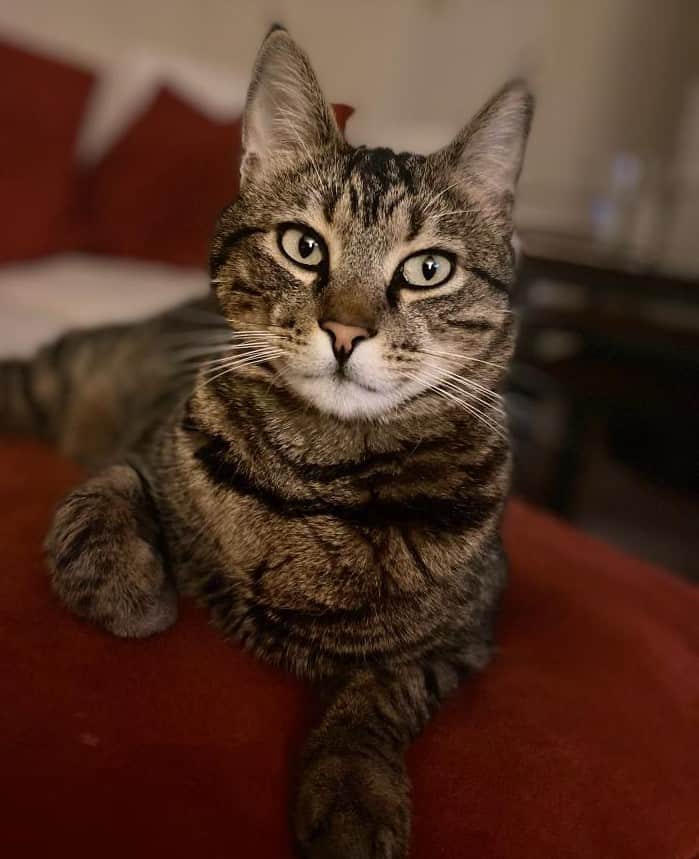
Aegean cats originated in the Cycladic Islands, and are mostly concentrated in Greece and Turkey today.
Another cat breed that is quite rare is the Aegean breed. They originated in the Aegean Sea, inhabiting the Cycladic Islands which include Andros, Delos, Mykonos, Santorini, and Naxos. While Aegean cats date back 10,000 years, their main population today exists on these same islands as well as Turkey, where they are either domestic or feral. The Aegean breed was not even recognized as an official breed until the 1990s when some began to breed them.
These cats are unique for being a naturally occurring landrace, who have not been developed by cross-breeding by humans. Aegean cats are well suited to the outdoors and make great pets, as they are sociable and friendly. While common in Greece and Turkey, they remain rare in every other part of the world.
Thank you for reading! Have some feedback for us? Contact the AZ Animals editorial team.








